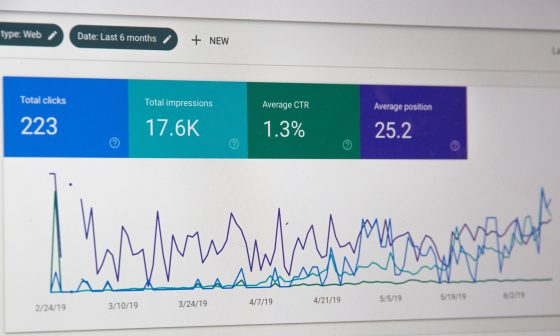Influencer collaborations haven’t been around for a long time (at least not in their current form), yet the buzzword seems to be the hottest trend in marketing right now.
Take a closer look and you’ll understand why—it’s because influencers offer brands a wholly unique way to connect with audiences. They add a human element that you don’t really get with traditional ad campaigns. And guess what? It works. Since 2019, the global market cap of influencer marketing has tripled, reaching around $24 billion in 2024.
On this page, we’ll uncover the story behind successful influencer collaborations and how to get started yourself.

Image sourced from hubspot.com
How can influencer partnerships improve brand trust?
We’ve scratched the surface of the magic of social influence. But digging a little deeper, you’ll find a whole host of reasons why companies are turning to influencer partnerships to market their products. Let’s cover each of the categories in detail.
Influencers bring in a sense of relatability and authenticity
We all hesitate before making a purchase. We need to read the reviews, look at other videos, watch unboxing videos, or ask a trusted person for advice. It’s like we’re waiting for someone to nod and tell us, “Yes, this is a good product, you should buy it.”
With influencer marketing, the influencer is your target market’s trusted person. By sharing their genuine experiences with your products or services—whether that’s through a heartfelt blog post or a social media story—it reads like a genuinely impartial review.
Done right, this transfers trust to your brand. It makes your product quality seem superior, your price tag reasonable, and your company credible. Influencers connect your brand to potential customers in a way that feels less like a sales pitch and more like a recommendation from a friend. It’s a simple idea that’s grounded in real psychology.
The data to back this up is almost shocking. A 2023 study found that 69% of US consumers were more likely to trust an influencer’s recommendation than the brand itself. And this was particularly the case where the influencer was described as ‘authentic’ and ‘relatable’.
Collaborations expand brand reach and foster engagement
Influencer collaborations act as your brand’s passport to new territories. When an influencer shares your product, their followers (your potential customers) start noticing. It’s like getting a shoutout at the cool kid’s party.
With every social post, tweet, or story, more and more people get curious. Once your social media campaign reaches critical mass, a chain reaction of likes and shares helps your brand reach corners of the market you didn’t even know existed. In these online spaces, your brand doesn’t just gain visibility; it starts to live in the minds and conversations of potential customers, expanding your reach organically through word-of-mouth marketing. In short, it’s called producing viral content.
Endorsements serve as social proof, especially in specialized niches
When we see someone rave about a product, many of us think, “I’ve got to have it.” This is social proof in action, and it’s even more potent in specialized niches.
When a trusted voice in, say, the fitness influencer niche endorses your company, it’s like getting the seal of approval from the community’s elected spokesperson.
Everyone knows that your products are the real deal, and more than that, they actually become fashionable to own. Influencer marketing campaigns create hype because potential customers feel like they’re in on a secret the rest of the world hasn’t discovered yet.

Screenshot sourced from @shesattarget (Via TikTok)
Taps into highly targeted and engaged audience segments
You know how fishing with the right bait can guarantee a good catch?
That’s what tapping into targeted audience segments through influencer partnerships is like. You’re not casting a wide net and hoping for the best. Instead, you’re selecting the perfect relevant influencer whose followers are the exact audience you’ll be selling to.
These followers are already interested, engaged, and ready to hear what their favorite influencer has to say about your product.
It’s targeted marketing at its finest, ensuring your message lands on the phone screens of customers who are eager to see it. And because these segments are so engaged, they’re more likely to act—whether that’s by visiting your website, making a purchase, or spreading the word themselves.
So, when picking collaboration partners, don’t just look at those profiles with massive follower counts. Look for micro-influencers whose audience demographics match your product. These influencers often take lower commissions and have a higher sales conversion rate.
Strategies to establish brand trust with influencer collaborations
The right type of influencer collaboration for you depends heavily on your marketing goals. This section will delve into how you can get the most from your ambassador programs and guarantee their creative content truly strikes a chord with your target market.
Use audience data to inform your choice of influencers
Data analytics is key to any sort of ad campaign, and this is particularly the case with influencer marketing because of how targeted the content is.
You can get a sense of audience data on your website analytics platform. As for social media, try searching hashtags for your products and finding the biggest accounts, reading the comments, looking at the types of posts they’ve made, etc.
To go one step further, consider using a solid business management system. This software provides a centralized hub for all the data across your business and has CRM integration options. This means you’ll get real-time insights into which target audience has engaged with your brand so far and which marketing campaigns have performed poorly in the past.
Armed with this data, you can make an informed decision about who might be a good fit for your brand. You’ll also have the financial and project planning insights you’ll need to consider your budget, time scale, and the level of influencer you’re interested in working with–vital information when initially reaching out.

Image sourced from semrush.com
Encourage influencers to share personal experiences with the brand
At the heart of effective influencer collaborations is the art of storytelling. And what makes a good story? It needs to be a) structured and b) appealing to the viewer’s emotions.
You should encourage influencers to share their personal journeys with your brand—from initial discovery to anticipation of new product launches.
Get started with an honest review of the primary product, and gradually broaden the narrative to explain to consumers what your brand is all about. For instance, you could ask the influencer to recount conversations they had with your service team, making sure to big up the ‘friendly’ and ‘trustworthy’ vibes.
Offer exclusive deals in influencer campaigns that fit business goals
Everyone loves feeling special, which is why things like discount codes are a tried-and-true way of driving up sales. This aspect of consumer psychology is no different when it comes to influencer marketing.
To catch your target audience’s attention, provide your influencer partners with codes for followers that give product discounts. It makes your proposition seem like a ‘good deal’ and prompts more rapid purchase decisions—essential on platforms like TikTok that tend to foster low attention spans. You could even offer exclusive access to new product lines to make people feel like they’re part of a special club.
Co-develop engaging content to showcase product benefits
Collaboration is a two-way game. When you work with influencers to create high-quality content, try to go a step further than simply showcasing your product to the masses.
Imagine a content creator meeting your founder for a casual coffee chat and then demonstrating your product in a way that feels organic and genuine. The influencer acts like the interviewer, who is slowly won over by your sales pitch and concludes that they’re a fan of the product. This kind of co-created content does wonders.
Another approach is to give surplus products to your content partners so they can host giveaways for their followers—something known as “influencer gifting.” It works because it makes your brand come across as charitable, and it also stirs up hype with people commenting on the post for their chance to win the prize draw.

Free to use image sourced from Unsplash
Track conversion attribution from influencer partnerships
Now, let’s talk numbers. Knowing if your influencer partnerships are actually leading to direct sales is crucial, otherwise it’s wasted effort and no returns. To track these figures, you’ll need to set up an affiliate program.
Give your influencers an affiliate link to share, and they get a percentage commission from every sale, incentivizing them to make the best content possible. Suddenly, you’ve also got a clear line from content to purchase, showing you where the money is coming from.
To truly get a grip on this data, you should use something even more robust. You can use an influencer management platform to track their performance and combine this with data from a cloud ERP system. The former will give you specific insights into influencer marketing, while the latter will help you contextualize this data amongst the rest of your marketing activities.
Even better, ERP systems give you a full view of your business operations, covering all of your costs, marketing, and project management. This provides you with the holistic view you need to monitor activity and plan future, improved campaigns that work for your entire business.

Image sourced from Sage
Offer incentive structures to nurture lasting influencer relationships
Affiliate programs are the most common type of reward system for influencers. You may have heard of them before in the form of Amazon Associates or the eBay Partner Network. They work really well for both parties—the influencer gets a cut of every sale, and you only pay up once the results are there in writing.
That said, if you’re playing the long game, you may want to eventually set up an ambassador program. This is an advanced type of incentive system that’s more associated with creating long-term partnerships. To do this, you need to offer more compensation (think flat rates for working together), free products, and exclusive access to company events.
Pull this off successfully, and you get an army of loyal brand advocates who primarily promote your brand over competitor products.
Key takeaways
Influencer collaborations are rapidly becoming a disruptive force in the marketing world—and it’s clear that they’re here to stay. Instead of pushing back against it, why not embrace the trend?
To get started, set up an account on social platforms and start searching for the biggest content creators and hashtags in your niche. Then, reach out to these influencers directly.
If you hit all the goals of good storytelling and present your product features in a compelling (but subtle) pitch, you’ll surely start seeing sales come from these platforms.
Remember, data analysis is key to seeing which influencers and campaigns are most effective. And if things aren’t working, switch up your style with co-created content or prize giveaways. You’ll only know what works if you try.
Whether you use affiliate links or ambassador programs, the goal is to create long-term relationships that benefit everyone involved. So, what are you waiting for? Get out there, start collaborating, and watch your products become the hottest trend on social media!


